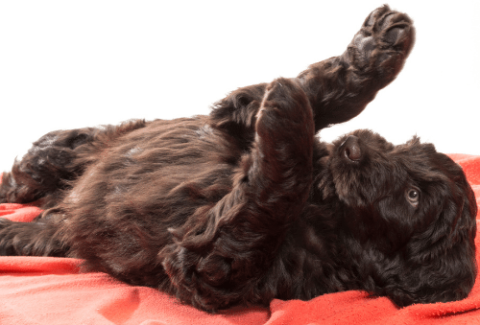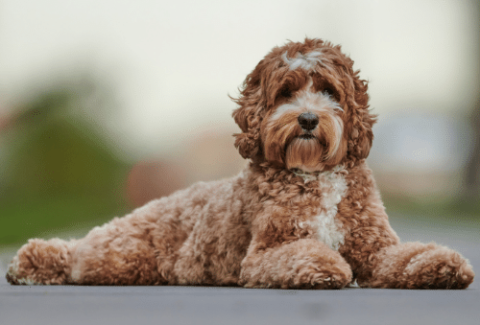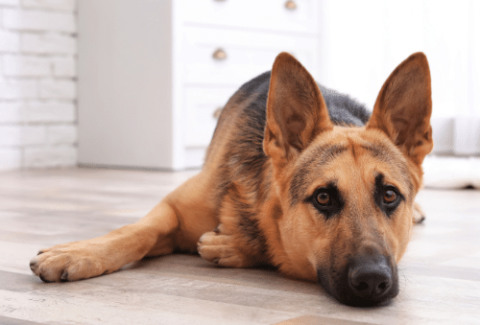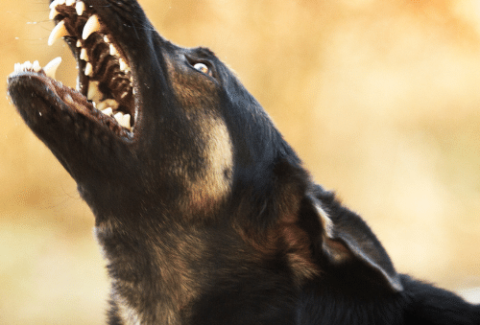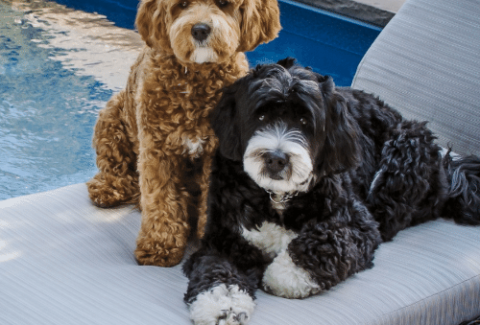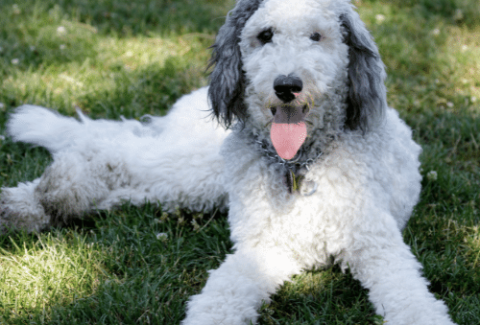How much does a Havanese cost?
June 7, 2021 2021-06-08 13:31How much does a Havanese cost?
Havanese are not one of the most popular toy dogs out there, but they are gaining popularity. While they are smaller, they are sturdier than other toy breeds. Their low-shedding coat requires quite a bit of grooming, but they don’t require much physical activity.
They are generally considered “high-end” dogs. This factor, combined with their rarity, makes them a bit more expensive than most other dogs. How much exactly do they cost?
In general, the average purebred Havanese puppy will cost anywhere from $1,000 to $1,500. This price is quite a bit higher than most toy breeds.
Occasionally, these dogs may cost as much as $2,500 if they are considered show-quality. At other times, pet-quality dogs may be as cheap as $700. The location, age of the puppy, health problems, pedigree, and prominent “disqualifying” markings will affect the price.
Below, we’ll take a look at how much you can expect to pay for a Havanese, both upfront costs and annual expenses.
Table of Contents
How much is a Havanese?
Havanese can cost varying amounts depending on the breeder you’re purchasing from. Generally, you can expect to pay anywhere from $1,000 to $1,500 if you’re purchasing from a reputable breeder. However, most puppy listings appear to be at the lower end of this range.
Of course, if you don’t purchase your puppy from a breeder, you’ll likely pay less than this. Just because it is cheaper doesn’t necessarily mean it is the better option, though. Most cheap puppies are cheap for a reason. You may end up paying more in the long run on vet bills and similar expenses.

Getting a puppy from Craigslist
When you purchase a puppy from Craigslist, you never know what you’re going to get. Some puppies on these platforms are bred by reputable breeders who are just trying to advertise their puppies. However, others can potentially be bred by puppy mills or even potentially stolen.
Therefore, it is essential to do your research to ensure that you are purchasing from a reputable source. Puppy mills may charge anywhere from $100 to $600 for these dogs. Puppies in this price range should be scrutinized.
Puppy mills often do not health test their dogs before breeding, leading to serious health problems later down the line. These puppies are more likely to develop genetic health problems. Furthermore, most of them do not come with the proper vet care and vaccinations, so you’ll be paying more upfront for these services upon adoption. Many won’t be properly socialized, so that they may be more prone to behavioral problems as well.
Backyard breeders often sell through Craigslist as well. Their puppies are usually cheaper, but they may still be a good option as long as you do your research. Unfortunately, many backyard breeders are Havanese owners that have decided to breed the dogs. Still, they may not necessarily understand how to properly health test the parents or care for the puppies. Therefore, they may produce sickly puppies who need more vet care.

However, some backyard breeders have taken the time to research and may even be working under a more experienced breeder. They may charge less because they do not have a reputation yet. You can expect to pay anywhere from $600 to $1000 for these puppies.
Figuring out which breeders are which can be difficult, but it can be done by asking a few questions. First, always ask to see the mother and where the puppies are kept. Any reputable breeder will not mind showing you the mother and pen where the puppies are kept. However, puppy mills often keep their dogs in poor conditions and will often refuse to show customers the mother. This is a major red flag.
You should also ask what health tests the parents have undergone and if the dogs are registered. All reputable breeders should do health testing on their dogs. Check the dog’s registration as well to ensure that it is with the AKC. Some will claim that their dogs are “registered,” but it may be with random, unreputable companies.
Ask for vet records for the puppy you’re adopting. All puppies should be seen by a vet at least once before they are adopted for their beginning vaccinations.
Getting a puppy from a rescue
Puppies found at rescues are often the result of accidental litters. Therefore, the parents likely weren’t health tested, and the puppies may not have received adequate care at a young age.
However, once the rescue takes the puppies in, they are usually given the proper vaccinations and vet care. Therefore, they tend to be substantially better taken care of than dogs produced by random breeders on Craigslist. Rescues will also be very upfront about any health conditions their puppies have, so you at least will know what you’re getting when you adopt.
You’ll likely pay less for these puppies since rescues are not-for-profits. Usually, puppies will cost anywhere from $100 to $500. However, the price often depends on the amount of vet care required by the dog, so puppies tend to be a bit more expensive than adults.

Getting a puppy from a breeder
Adopting a puppy from a breeder is the most expensive option up front, but you may end up saving money in the long run. Most breeders sell their puppies for around $1,000 to $1,500.
Many of these puppies have already received a decent amount of vet care, including their first round of vaccinations. This is money you don’t have to pay in vet bills.
Some breeders also provide a health guarantee for their puppies. Therefore, if the puppy ends up not being healthy, you won’t be left with huge vet bills.
Reputable breeders will health test the parents before they are bred. As a result, they are less likely to produce puppies with genetic conditions, though this is not entirely preventable in all cases. The Havanese is prone to a few genetic conditions, so this is essential to prevent potential health problems further down the line. Unfortunately, it is also one of the few ways you can reliably improve the breed’s health, so you’re also paying for its future.
Breeders specializing in the Havanese usually understand what the puppies need to be happy and adaptable as adults. Therefore, most will be socialized to some degree before they are adopted, and basic training is usually started. While the Havanese are usually too small to be housetrained before they are adopted, most breeders usually start the process.
Cost of health tests
When you purchase a dog from a breeder, part of your money is going to health testing. This is done on adult dogs before they are bred and helps ensure that they don’t possess any negative health traits passed on to the puppies.
These conditions are not made apparent until the dog is much older unless specific health tests are made. If left up to nature, the dog may produce multiple litters before the health problem becomes apparent. At this point, all those puppies are at risk of developing that condition later in life. Therefore, health tests are necessary to ensure litters of unhealthy puppies are not produced.
Luckily, the Havanese Club of America recommends several health tests for all dogs before breeding. Dogs that have undergone the proper health testing are registered with CHIC. You can ask a breeder for a dog’s CHIC number to look at the dog’s health files. If the breeder can’t provide you with one, then the dog hasn’t been health tested.
To receive a CHIC number, each dog must undergo four tests:
- An annual eye exam (CAER)
- A hearing test (BAER)
- A hip x-ray
- Patella (knee) certification
We’ll talk about each of these in turn. When you buy a puppy from a breeder, you’re paying in part for these health tests. This is one reason why they are so much more expensive than purchasing from a puppy mill, for instance.

OFA Companion Animal Eye Registry (CAER)
The CAER examination screens dogs for several eye diseases that have a genetic component. This exam has to be performed yearly from the time a dog is one year old. A board-certified veterinary ophthalmologist must perform this exam. It can’t just be done at a dog’s regular annual vet appointment.
The eye exam can cost anywhere from $50 to $200, depending on the area. It then costs an extra $15 to get the results certified.
OFA Hearing test (BAER)
This hearing test can be performed as early as six weeks old and only needs to be performed once. It should be done on all breeding dogs, but some breeders also do it on all puppies before they are adopted, which helps ensure that they are healthy before you bring them home.
A veterinary neurologist usually performs this exam as it requires specific equipment. It is done to ensure that the dog can hear correctly. A dog that fails this test is often deaf to some degree. The test only takes a few moments, but it is performed in each ear separately. It can be done while the dog is sedated, if necessary, but most puppies are excellent with the test while awake.
This test usually costs about $80, not counting the general appointment fee if it is not done at the dog’s regular appointment. Certifying the results costs another $15.
OFA Hip Dysplasia
Hip dysplasia is a severe condition in which the ball and socket of the joint do not line up correctly. This causes excess wear and can lead to pain, limping, and lameness. It is sadly common in many dog breeds, including the Havanese.
The only way to check for hip dysplasia is through an x-ray, which usually costs around $300. This doesn’t count necessary appointment fees if it isn’t done at the dog’s usual checkup. The x-ray must then be read by three different radiologists for an OFA hip grade to be assigned. This typically costs about $35.
This test only has to be done once after two years of age. Ratings of excellent, good, and fair are generally considered “normal.” Borderline, mild, moderate, and severe ratings usually make the dog incompatible with breeding – especially with another dog with a poor rating.
PFA Patella Luxation
Patella luxation is the dislocation of the kneecap. Usually, the kneecap sits in a groove on the femur and moves in this groove as the joint moves. However, some genetic problems make the kneecap and groove not line up correctly, which can cause the kneecap to shift out of place. This causes pain and can damage the dog’s leg.
Luckily, it is pretty easy to check for this disease by feeling the dog’s kneecaps. This is typically done at a dog’s routine exam when they turn one. An extra $60 or so is usually charged on top of the regular exam fee. It costs $15 to have the result verified and added to the CHIC database.
Annual costs of owning a Havanese
Luckily, Havanese are pretty small. This also means that their annual costs are less than larger dogs in most cases. This is because they eat less, which leads to a lower food cost. In addition, their equipment will also usually cost less since it is smaller. For example, smaller dog beds typically cost less than more extensive dog beds.
Generally, you should plan on spending $2,800 on your dog’s expenses in the first year. This doesn’t include the actual cost of the dog – just everything they will need after you purchase them. This price goes down substantially after that, to about $1,100 a year. Of course, this assumes your dog is healthy, as health conditions can easily add more to this price.
Vet expenses
Depending on where you adopt your dog from, you can plan on spending about $400 to $800 in the first year on your dog’s vet expenses. This is typical because puppies require quite a few vaccinations and regular vet visits during the first year.
Puppies will typically need at least three trips to the vet. Sometimes, the breeder will cover the first visit, so you won’t have to pay for it. These visits can cost between $60 to $200, depending on the vaccinations each puppy needs.
Neutering or spaying your dog usually costs between $100 to $300. If there are not-for-profit clinics near you, you may be able to get it done for even lower. Some clinics charge as little as $50.
Adult Havanese will usually only need $300 to $700 a year. Health conditions will raise this price substantially, though. You will likely pay between $100 to $250 for an annual vet visit. You will also need to pay for heartworm and flea prevention, which will cost between $150 to $250 each year.
There are various health conditions that these dogs are prone to. For instance, patellar luxation can cost between $300 to $2,000 per knee. If your dog only needs pain management and supplements, you can expect to pay somewhere on the lower end of this spectrum. However, dogs with severe problems will need surgery, which is much more expensive. Usually, you can expect to pay a few thousand dollars for corrective surgery, as well as aftercare medications.
If your dog needs pain management, then you should plan on paying between $300 to $600 annually. After that, surgery will be a one-time cost.

Food and toy costs
Havanese don’t grow very tall, so they don’t need quite as much food as other dogs. On average, both adults and puppies will cost about $130 to $210 to feed a year. This assumes you choose high-quality food. Cheaper brands will cost cheaper. They may cost as little as $50 a year. However, this may cost you more in the long run in vet bills.
Because Havanese are so small, the amount they eat as a puppy doesn’t differ much from the amount they’ll eat as an adult.
You can purchase food in bulk to save money. However, they are so small that they may not eat them fast enough. For this reason, you may waste less money if you purchase smaller bags that your dog will eat before they go stale.
Toys usually won’t cost very much $30 to $50 the first year, and then about $15 every year after that is a good guess. These dogs aren’t super rough on toys, so each toy should last for years. They also need rather small toys, which are usually less expensive than larger toys.
Training Costs
Havanese are pretty easy to train. If you’ve owned a dog before, you may not need to spend any money on training besides treats. This is because they aren’t enormous and generally remain behaved while indoors. However, they do need some basic training, such as “sit” and “stay.” These can potentially be lifesaving, so it is essential not to skip them because your dog is smaller than most.
If you decide to get professional help, you can expect to pay about $100 to $300 for a series of sessions. Group classes are recommended, as these dogs typically don’t have trouble with other dogs. Plus, group classes are cheaper and add in some needed socialization.
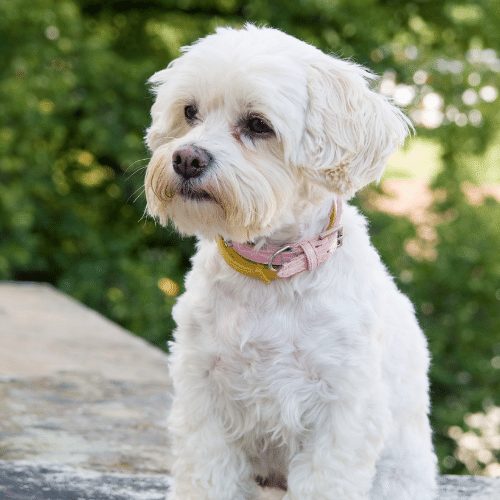
Factors influencing the price
Why do some puppies cost $800 while others are nearly $2,000? Several factors go into the price of the puppy.
The breeder’s reputation is generally an essential factor to consider. Those breeding dogs for decades and are well-known as quality breeders will usually charge more for their puppies. You’re paying for the extra experience and knowledge that your puppy was bred by someone who knows what they’re doing.
The animal’s bloodline also matters. Those that have champions in their bloodline will be more expensive, as other breeders are willing to invest quite a bit of money in these puppies. As a pet owner only, this may not matter much to you.
Registration papers will typically cost extra. In addition, it costs money for the puppy to be registered, which will typically be added directly to their price.
If your dog has had any vet care before being adopted, this can cost extra. Vaccinations and any health tests are typically added to the price of the puppy. However, these are costs that you won’t have to pay later.
Puppies that are in high demand in an area may be more expensive. This is simple supply and demand. If there are fewer puppies to go around, you may have to pay more.
Price considerations
While Havanese are generally smaller and cheaper to keep than other dogs, they still require thousands of dollars each year. Therefore, it is essential to budget correctly for your dog to don’t end up in a position where you can’t properly care for them anymore.
We also recommend having an emergency fund of at least $5,000 for these smaller dogs. This will cover any severe health conditions that pop up, which are difficult to budget for. If your dog suddenly needs surgery, you’ll have the funds ready to go and can make the best decision for your puppy that isn’t based on money.
The bottom line
Havanese are typically cheaper than larger dogs, but their care can still cost quite a bit of money. If you purchase the dog from a qualified breeder, you can expect to pay about $1,000 to $1,500 for a puppy. Adoption agencies will often only charge $100 to $300, but it can be rare to find a Havanese puppy at a shelter.
The first year will cost the most, as you’ll need to pay for many one-time purchases. You can expect to pay about $2,800 for your dog’s first year, while the cost will go down to about $1,100 after that. This is assuming your dog remains healthy, as health conditions can often cost thousands to treat. This is why we recommend having an emergency fund as well. It’s challenging to budget for surprises.
Steffi Trott
Related Posts
Are Labradoodles High-Maintenance?
At what age do Labradoodles calm down?
Are Pomeranians Good for First-Time Dog Owners?
Are German Shepherds Hypoallergenic?
Are German Shepherds Smart?
Are German Shepherds Vocal?
Are German Shepherds Good With Kids?
Do Bernedoodles like Water?
Do Bernedoodles Like Cats?
How Long Can Australian Shepherds Be Left Alone?
Check out our effective and affordable online dog training courses!
-
Sale Product on sale
 Tackling Reactivity Bundle
Tackling Reactivity Bundle
MONEY BACK GUARANTEE$564.00$49.00 -
Sale Product on sale
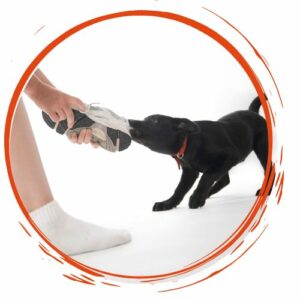 Perfect Obedience Bundle
Perfect Obedience Bundle
MONEY BACK GUARANTEE$349.00$49.00 -
Sale Product on sale
 Ultimate Puppy Bundle
Ultimate Puppy Bundle
MONEY BACK GUARANTEE$416.00$49.00 -
Sale Product on sale
 The Perfect Focus Bundle
The Perfect Focus Bundle
MONEY BACK GUARANTEE$445.00$169.00 -
Sale Product on sale
 Ultimate Masterclass Bundle
Ultimate Masterclass Bundle
MONEY BACK GUARANTEE$2,213.00$499.00

